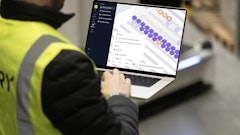
Manufacturing is undergoing one of the most significant transformations in decades. From the rollout of digital factories and the return of domestic production to growing ESG scrutiny and volatile demand, the ripple effects are being felt across industrial supply chains, from Tier 1 automotive suppliers to aerospace OEMs. At the center of this evolution is procurement.
Chief procurement officers (CPOs) are being called on to not only support plant operations but also to lead with strategic clarity. The modern manufacturing environment demands that sourcing and procurement functions evolve in lockstep with broader industrial change. What worked yesterday, such as static supply models or quarterly planning cycles, will not sustain the complexities of tomorrow’s production landscape.
Here are five key shifts reshaping manufacturing, and how procurement leaders can respond with strategies that are both future-ready and grounded in shop-floor realities.
Smart manufacturing demands smart sourcing
As factories embrace advanced technologies like manufacturing execution systems (MES), SCADA systems, digital twins, and PLC sensors, sourcing strategies must move beyond cost control and transactional efficiency. The rise of machine-driven operations and real-time data is compressing sourcing timelines and requiring procurement teams to respond to events as they happen, not just based on long-term forecasts.
For instance, a packaging manufacturer may use a digital twin to simulate production throughput and identify when critical components like die-cutting tools or lubricants will need to be reordered. These needs are often driven by runtime hours, not static inventory thresholds.
Procurement’s value increases significantly when it supports plant responsiveness. That means automating intake from the floor, triggering sourcing for maintenance, repair and operations (MRO) parts through IoT-based alerts, and working closely with engineering on tooling procurement as part of the product development lifecycle.
Reshoring and nearshoring redefine supplier strategy
Reshoring is no longer hypothetical. According to the Reshoring Initiative, more than 300,000 U.S. manufacturing jobs were brought back in 2023. Whether it is new electric vehicle battery plants in the Midwest or aerospace machining facilities in Texas, manufacturers are reconfiguring their supply chains based on proximity, risk exposure, and production agility, not just unit cost.
CPOs must now evaluate suppliers based on regional capacity, tooling readiness, and component availability. Instead of defaulting to global low-cost regions, they must assess whether suppliers can support line-side delivery, respond quickly to tooling change requests, and meet local compliance standards.
In industries like heavy equipment and industrial automation, even a one-day delay in delivering a casting mold or die set can idle production assets and create downstream disruption. Centralizing supplier onboarding and performance management helps procurement teams adapt quickly to new sourcing requirements while maintaining quality, safety, and regulatory alignment.
Regulatory and ESG pressures reshape supplier expectations
In industrial sectors such as automotive, electronics, and chemicals, regulations like REACH, RoHS, and Conflict Minerals are now integral to production. ESG metrics have a direct impact on sourcing decisions, influencing which materials make it into a bill of materials and which vendors are deemed acceptable based on carbon output or labor practices.
Scope 3 emissions, which often stem from Tier 2 and Tier 3 suppliers, represent a major challenge. Procurement must now track embedded carbon in raw materials like steel and aluminum, ensure suppliers adhere to chemical use standards, and monitor downstream logistics for waste and emissions compliance.
Procurement leaders need to embed ESG metrics and compliance checks directly into sourcing workflows, RFQs, contracts, and total cost of ownership models. Solutions enable this by providing centralized views of supplier performance and live compliance status, reducing risk before materials reach the facility.
Talent and collaboration gaps slow down progress
Manufacturing operations have adopted automation, but many procurement workflows remain disconnected and manual. Intake requests for production-critical parts often begin with a supervisor using a spreadsheet or sending an email. Engineering may need custom components for a product launch, but delays arise when procurement lacks visibility into supplier lead times or cost structures.
The skills gap is another issue. Many manufacturing procurement teams are short on staff who have both sourcing knowledge and technical fluency with plant-level requirements, such as tolerances, material specs, or machine compatibility.
Manufacturers are increasingly investing in tools that digitize intake, automate approvals, and enable real-time collaboration across procurement, engineering, legal, and finance. This reduces bottlenecks and brings procurement activity closer to where the need originates, whether that is on the shop floor or in the product design phase.
Procurement as a value generator, not a cost center
In industrial manufacturing, one late component or missed delivery window can shut down a production line. Procurement is being evaluated not just on price savings but on its impact on uptime, throughput, and capital equipment utilization.
Advanced manufacturers are building sourcing strategies around maintenance schedules, plant production cycles, and supplier collaboration programs like supplier-managed inventory (SMI) and vendor-managed inventory (VMI). These approaches reduce unplanned downtime, optimize working capital, and help operations run predictably.
Aligning sourcing with maintenance calendars and production planning also minimizes the risk of emergency orders and unplanned costs. CPOs that take this approach demonstrate how procurement can drive measurable business outcomes, not just reduce spend.
Manufacturing is evolving. Procurement must lead the charge.
The challenges reshaping manufacturing are structural. Digital transformation, regional sourcing, regulatory mandates, and skilled labor shortages are here to stay. CPOs have a clear opportunity to redefine procurement’s role from operational support to strategic leadership.
To meet this moment, manufacturing procurement teams should:
● Digitize intake and approval processes from the plant floor
● Build regional supplier ecosystems with agile, compliant partners
● Embed ESG and compliance metrics directly into sourcing decisions
● Align procurement planning with uptime, throughput, and capital investment goals
The future of manufacturing is being built in real time. Procurement leaders have the opportunity to architect the systems that will keep it running efficiently, compliantly, and competitively.















